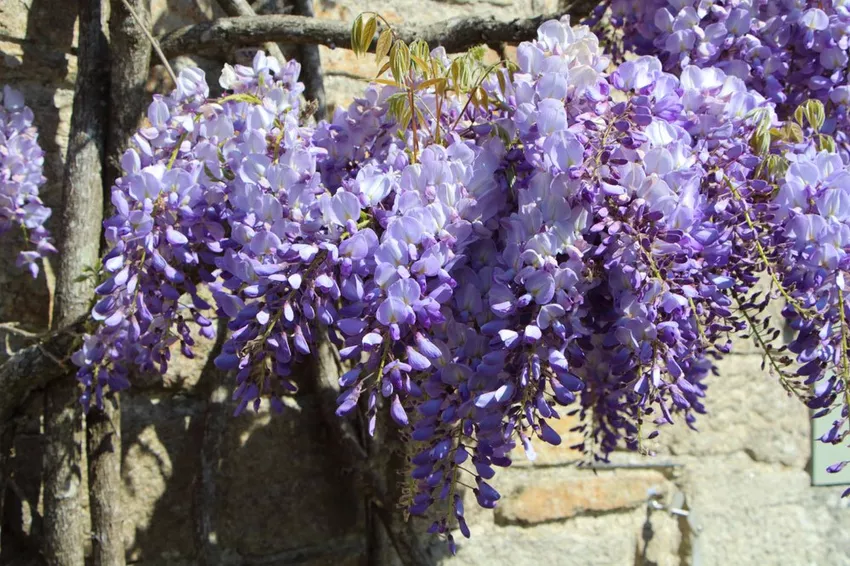Wisteria looks mesmerizing in a garden. If you can't get enough of the flower, you can easily multiply wisteria. Here are 3 different options. In summer, when the blossoms from wisteria spill blue or purple over house facades and vine arbors, they are not only a picturesque sight for hobby gardeners and flower lovers.
In summer, when the blossoms from wisteria spill blue or purple over house facades and vine arbors, they are not only a picturesque sight for hobby gardeners and flower lovers.
This idyllic splendor encourages many a garden lover to multiply Wisteria and to enrich other parts of their property with the young climbers. To multiply the wisteria, you have 3 options:
- using seeds
- with cuttings
- with sinkers
➲ Propagating wisteria with seeds
You can use seeds from your own wisteria for propagation or you can use wisteria seeds from the garden trade. It's entirely up to you.
Towards the end of July, seed pods about 10 centimeters long have developed from the flowers of the warp plant. The seed rests encased in it. You can now pick the pod-like pods and place them in a bowl. A short time later, the dry pods burst open and release their seeds.
Slightly scratched and let the grains soak in water for a day. Then the seed is embedded in a mixture of sand and seed soil. It is best to use small pots for this.
It is important to keep the seed in the pots moist at all times.
Creating a microclimate is helpful for constant moisture in seedlings. To do this, place the pots in a transparent plastic bag with a pressure seal. Finally, put a little water in this bag, mixed with a few drops of universal fertilizer and close the pressure seal.
No further watering is required, as no moisture can evaporate from the plastic bag.
Pot bags can now be placed on a windowsill. For a good microclimate in the plastic bags, choose a warm place. A temperature of around 25 degrees Celsius during the day and around 20 degrees Celsius at night is advantageous.
➲ Propagating wisteria with cuttings
If you prefer the wisteria with cuttingsIf you want to propagate, cut fresh shoots of the same year from the climber in July. Now the seedlings, which are about 8 centimeters long, are placed in plant pots with moist garden soil.
Make sure the soil in the pots is kept regularly moist. However, you should avoid standing water.
Now place the plant pots in a semi-shady place. Direct midday sun stresses the seedlings. As soon as the roots can be seen, the soil in the pot is well rooted. Now you can plant the young wisteria plants in place.
It is recommended to grow several cuttings for a good result. Sometimes the rearing of individual seedlings can fail.
➲ Propagating wisteria with sinker
It is rather uncomplicated to multiply wisteria with sinkers. Sinkers, also called sinkers, are shoots of the mother plant close to the ground that are lowered to the ground, covered with earth and fixed. The sinker and mother plant are not separated. New roots appear where the shoot was lowered into the soil and a wisteria offshoot is formed.
Proceed as follows:
In early summer choose a strong wisteria shoot. You steer it carefully onto the ground. Then heap it up with soil or bury it about 15 centimeters deep in the ground. For a good hold of the piled up or buried countersink, it is fastened. You can use a stable wire bent into a hook or a stone for this. After a short time, new roots appear at the point where the plant shoot was attached.
In the spring of the following year, the sinker will have developed strong enough roots and can be separated from the mother plant.